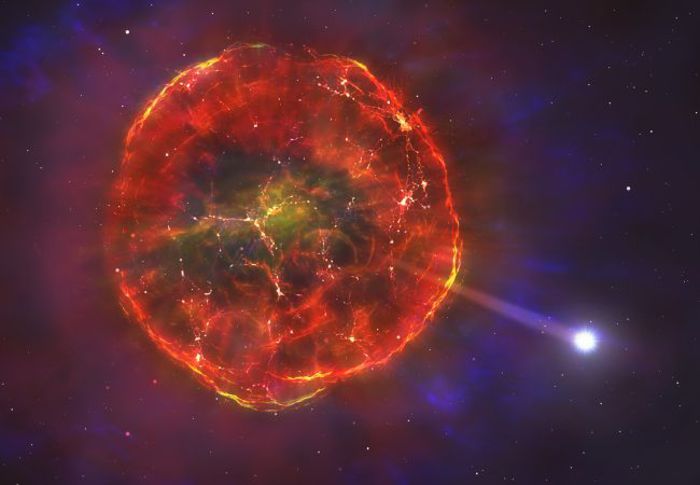A strange star whizzes 'in the wrong direction' in the Milky Way, moving very quickly in the opposite direction to that of rotation of our galaxy. Intercepted by the Hubble Space Telescope, it may be what remains of a supernova explosion. This is indicated by the study published in the Monthly Notices of the Royal Astronomical Society by the group of the British University of Warwick coordinated by astrophysicist Boris Gänsicke.
Called SDSS J1240 + 6710, the star is 1,430 light years from Earth and was discovered in 2015; only now, however, thanks to the telescope managed by NASA and the European Space Agency (ESA) has it been possible to study it in detail. The star is a white dwarf, that is, what remains of stars like the Sun once they have reached the end of their evolution and have lost the outer layers. The nuclei of these stars are mainly composed of carbon and oxygen surrounded by a layer of helium and hydrogen.
This white dwarf instead is unique compared to the others observed so far because it is composed of a mix of carbon, sodium and aluminum. It travels approximately 900,000 kilometers per hour in the opposite direction to that of the rotation of the Milky Way and its mass is just 40% of that of the Sun. According to the researchers, all these unusual characteristics could only be explained if the white dwarf is what remains of the partial explosion of a supernova.
These powerful explosions can occur when a white dwarf absorbs mass from a companion star and generally destroy the white dwarf. In the case of the SDS J1240 + 6710, however, the elements seen in the atmosphere of the white dwarf could have been produced in the first thermonuclear reactions of a supernova. However, the absence of iron, nickel, chromium and manganese, which are produced during these explosions, could indicate that the explosion may have stopped quickly, causing the white dwarf to survive and hurling it at high speed into space.

